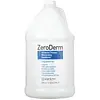What's inside
What's inside
 Key Ingredients
Key Ingredients

 Benefits
Benefits

 Concerns
Concerns

 Ingredients Side-by-side
Ingredients Side-by-side

Water
Skin ConditioningCetearyl Alcohol
EmollientGlycerin
HumectantCaprylic/Capric Triglyceride
MaskingHelianthus Annuus Seed Oil
EmollientPEG-40 Castor Oil
EmulsifyingStearalkonium Chloride
PreservativeGuar Hydroxypropyltrimonium Chloride
Skin ConditioningButyrospermum Parkii Butter
Skin ConditioningPanthenol
Skin ConditioningTocopherol
AntioxidantAloe Barbadensis Leaf Juice
Skin ConditioningLinum Usitatissimum Seed Extract
PerfumingCitric Acid
BufferingPhenoxyethanol
PreservativeCaprylyl Glycol
EmollientWater, Cetearyl Alcohol, Glycerin, Caprylic/Capric Triglyceride, Helianthus Annuus Seed Oil, PEG-40 Castor Oil, Stearalkonium Chloride, Guar Hydroxypropyltrimonium Chloride, Butyrospermum Parkii Butter, Panthenol, Tocopherol, Aloe Barbadensis Leaf Juice, Linum Usitatissimum Seed Extract, Citric Acid, Phenoxyethanol, Caprylyl Glycol
Aloe Barbadensis Leaf Juice
Skin ConditioningWater
Skin ConditioningCaprylic/Capric Triglyceride
MaskingStearalkonium Chloride
PreservativeStearyl Alcohol
EmollientCetearyl Alcohol
EmollientArgania Spinosa Kernel Oil
EmollientPanthenol
Skin ConditioningRice Amino Acids
Skin ConditioningMethyl Gluceth-20
HumectantPCA
HumectantTocopheryl Acetate
AntioxidantHelianthus Annuus Seed Extract
Skin ConditioningVitis Vinifera Seed Extract
AntimicrobialChamomilla Recutita Extract
Skin ConditioningPropanediol
SolventPhenethyl Alcohol
MaskingParfum
MaskingAloe Barbadensis Leaf Juice, Water, Caprylic/Capric Triglyceride, Stearalkonium Chloride, Stearyl Alcohol, Cetearyl Alcohol, Argania Spinosa Kernel Oil, Panthenol, Rice Amino Acids, Methyl Gluceth-20, PCA, Tocopheryl Acetate, Helianthus Annuus Seed Extract, Vitis Vinifera Seed Extract, Chamomilla Recutita Extract, Propanediol, Phenethyl Alcohol, Parfum
Ingredients Explained
These ingredients are found in both products.
Ingredients higher up in an ingredient list are typically present in a larger amount.
Aloe Barbadensis Leaf Juice comes from leaves of the aloe plant. Aloe Barbadensis Leaf Juice is best known for helping to soothe sunburns. It is also anti-inflammatory, moisturizing, antiseptic, and can help heal wounds.
Aloe is packed with good stuff including Vitamins A, C, and E. These vitamins are antioxidants, which help fight free-radicals and the damage they may cause. Free-radicals are molecules that may damage your skin cells, such as pollution.
Aloe Barbadensis Leaf Juice also contains sugars. These sugars come in the form of monosaccharides and polysaccharides, folic acid, and choline. These sugars are able to help bind moisture to skin.
It also contains minerals such as calcium, 12 anthraquinones, fatty acids, amino acids, and Vitamin B12.
Learn more about Aloe Barbadensis Leaf JuiceThis ingredient is an emollient, solvent, and texture enhancer. It is considered a skin-softener by helping the skin prevent moisture loss.
It helps thicken a product's formula and makes it easier to spread by dissolving clumping compounds.
Caprylic Triglyceride is made by combining glycerin with coconut oil, forming a clear liquid.
While there is an assumption Caprylic Triglyceride can clog pores due to it being derived from coconut oil, there is no research supporting this.
Learn more about Caprylic/Capric TriglycerideCetearyl alcohol is a mixture of two fatty alcohols: cetyl alcohol and stearyl alcohol. It is mainly used as an emulsifier. Emulsifiers help prevent the separation of oils and products. Due to its composition, it can also be used to thicken a product or help create foam.
Cetearyl alcohol is an emollient. Emollients help soothe and hydrate the skin by trapping moisture.
Studies show Cetearyl alcohol is non-toxic and non-irritating. The FDA allows products labeled "alcohol-free" to have fatty alcohols.
This ingredient is usually derived from plant oils such as palm, vegetable, or coconut oils. There is debate on whether this ingredient will cause acne.
Due to the fatty acid base, this ingredient may not be Malassezia folliculitis safe.
Learn more about Cetearyl AlcoholPanthenol is a common ingredient that helps hydrate and soothe the skin. It is found naturally in our skin and hair.
There are two forms of panthenol: D and L.
D-panthenol is also known as dexpanthenol. Most cosmetics use dexpanthenol or a mixture of D and L-panthenol.
Panthenol is famous due to its ability to go deeper into the skin's layers. Using this ingredient has numerous pros (and no cons):
Like hyaluronic acid, panthenol is a humectant. Humectants are able to bind and hold large amounts of water to keep skin hydrated.
This ingredient works well for wound healing. It works by increasing tissue in the wound and helps close open wounds.
Once oxidized, panthenol converts to pantothenic acid. Panthothenic acid is found in all living cells.
This ingredient is also referred to as pro-vitamin B5.
Learn more about PanthenolStearalkonium Chloride is a preservative.
Water. It's the most common cosmetic ingredient of all. You'll usually see it at the top of ingredient lists, meaning that it makes up the largest part of the product.
So why is it so popular? Water most often acts as a solvent - this means that it helps dissolve other ingredients into the formulation.
You'll also recognize water as that liquid we all need to stay alive. If you see this, drink a glass of water. Stay hydrated!
Learn more about Water